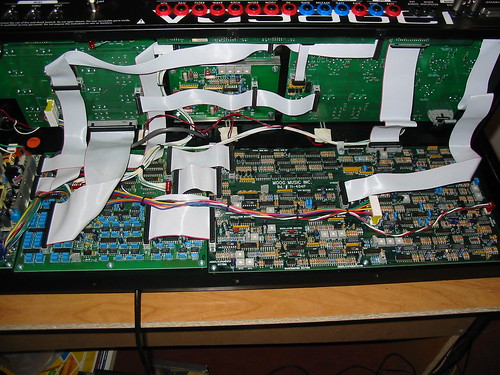Post
by Alien8 » Sun Jan 27, 2013 1:03 pm
Better? Neither is better. Better is a perspective.
Better for the consumer? Better for the company?
If you believe that green is the way, conservation, preservation, recycling, natural growth & decay rates, having vs not having, hard work is worth it... etc, then having a fully serviceable, large unit is the best.
If you could care less that you throw stuff away to a place you don't live in, I like it warmer, easy way out, lazy, take it all for granted then throw away is best. Remember companies don't fill landfills, consumers do.
For a business making electronics, the most profitable way is the outsource board manufacturing to the experts, who now use precision machines to make multi layer circuit boards. Those come at a huge discount when sold in bulk. The components that are soldered to those boards also come at a huge discount when bought in bulk. Along with this bulk quantity, size, repeat ability, tolerances and reliability become consistent, predictable and controllable so that multiples that are nearly identical can be sold.
Couple in the trend that electronics have always "needed" to be smaller, and you create a situation where you have components that you can't see.
What you get is a system that fails when a .005 cent component fails. Fully diagnosable, but impossible to repair at a low price.
From the users perspective, that cost is high because you may only use one or two units over a lifetime. To the business, it's much cheaper over the average number of units they make. They absorb the cost of developing and failures into their sale price / profit margin.
What the consumer gets is everything they want. The company also gets everything it wants. In the words of Muse "unsustainable". Because no one gets what they need.
Now look at older larger units that require service and can be serviced. Who fixes them? Not necessarily the person who sells them. The highly skilled service guys come at a price, components not so much. In the end you have a more organic less "perfect" system that takes skill to operate, like anything worth doing, you need to bee good at it. To have this it takes patience and passion.
Now add into the mix a world where immediate gratification is the trend. Patience can mean missed opportunities, lost income and lost jobs. Service to self ego consumption is how companies make money. Money apparently means something.
This leaves a consumer who wants what they want now, and has no idea what they need. Companies love this because they get to prey on these consumers. That's the extreme case, but exists almost everywhere. When you sell a product that everyone wants, and no one can fix, those times when it breaks means that the consumer is coming back to you again.
So which is better is an opinion. My opinion is that community, sharing and caring for our planet is "better". It feels right like Musick feels right. Capitalist greed and mind slavery, or the choice to be controlled are not they way I would like to live. Once the whole world stops taking itself for granted none of this will matter, and we can all have Moogs that satisfy everyone.
For now, I'm going to love what I got until it breaks, then I will make a choice to replace, repair, or move on... I recommend you do what your passion tells you and stop letting forums decide for you.
Vibration emanates from all things, even nothing. Using awareness to translate vibration into "music" is something that I am whole heartedly grateful for.
